10 Best Crypto Coins to Mine in 2024
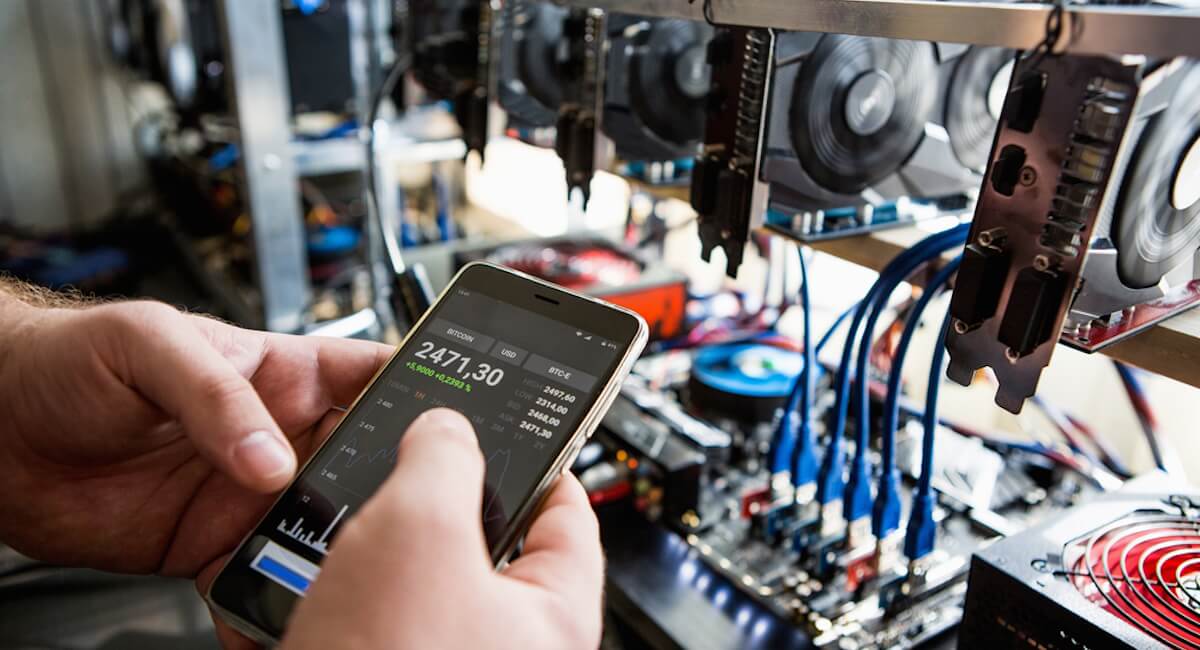
Mining allows you to earn crypto tokens when providing blockchain networks with computational power. This keeps crypto networks safe, decentralized, and operational. But what’s the best crypto to mine in 2024?
Read on, we discuss 10 crypto assets to consider mining today. We’ll compare mining coins based on profitability, difficulty, required equipment, and other important metrics.
The Best Cryptocurrencies to Mine in 2024
Let’s start with a list of the 10 best crypto to mine right now:
- Bitcoin (BTC) – Overall Best Cryptocurrency to Mine in 2024
- Monero (XMR) – One of the Easiest Cryptos to Mine
- Dogecoin (DOGE) – Most Profitable Coin to Mine
- Bitcoin Minetrix (BTCMTX) – Best Cloud Mining Crypto Solution
- Bitcoin Gold (BTG) – Best Cryptocurrency to Mine with GPU
- Zcash (ZEC) – Great Option for Privacy-Focused Miners
- Litecoin (LTC) – Established PoW Coin With Plenty of Liquidity
- Ravencoin (RVN) – KawPow Mining Coin With ASIC-Resistance
- Vertcoin (VTC) – One-Click Mining Software for Beginners
- Electroneum (ETN) – Mine ETN Coins on a Smartphone Device
- Ethereum Classic (ETC) – GPU-Supported Ethash Mining
The Most Profitable Coins to Mine Reviewed
We’ll now take a closer look at the best cryptocurrencies to mine. Read on to select the right mining coin for your requirements.
1. Bitcoin (BTC) – Overall Best Crypto to Mine in 2024
Although Bitcoin (BTC) is the most difficult crypto to mine, it still takes our number one spot. After all, Bitcoin is the de-facto cryptocurrency. It has the most holders and the largest market capitalization. Therefore, mining Bitcoin is worth exploring – if you have the financial means.
First and foremost, you’ll need some powerful Application-Specific Integrated Circuits (ASICs). These are a minimum requirement to mine Bitcoin in 2024. Expect to pay several thousand dollars for the most efficient models. You’ll also need some cooling devices; ASICs generate significant amounts of heat.
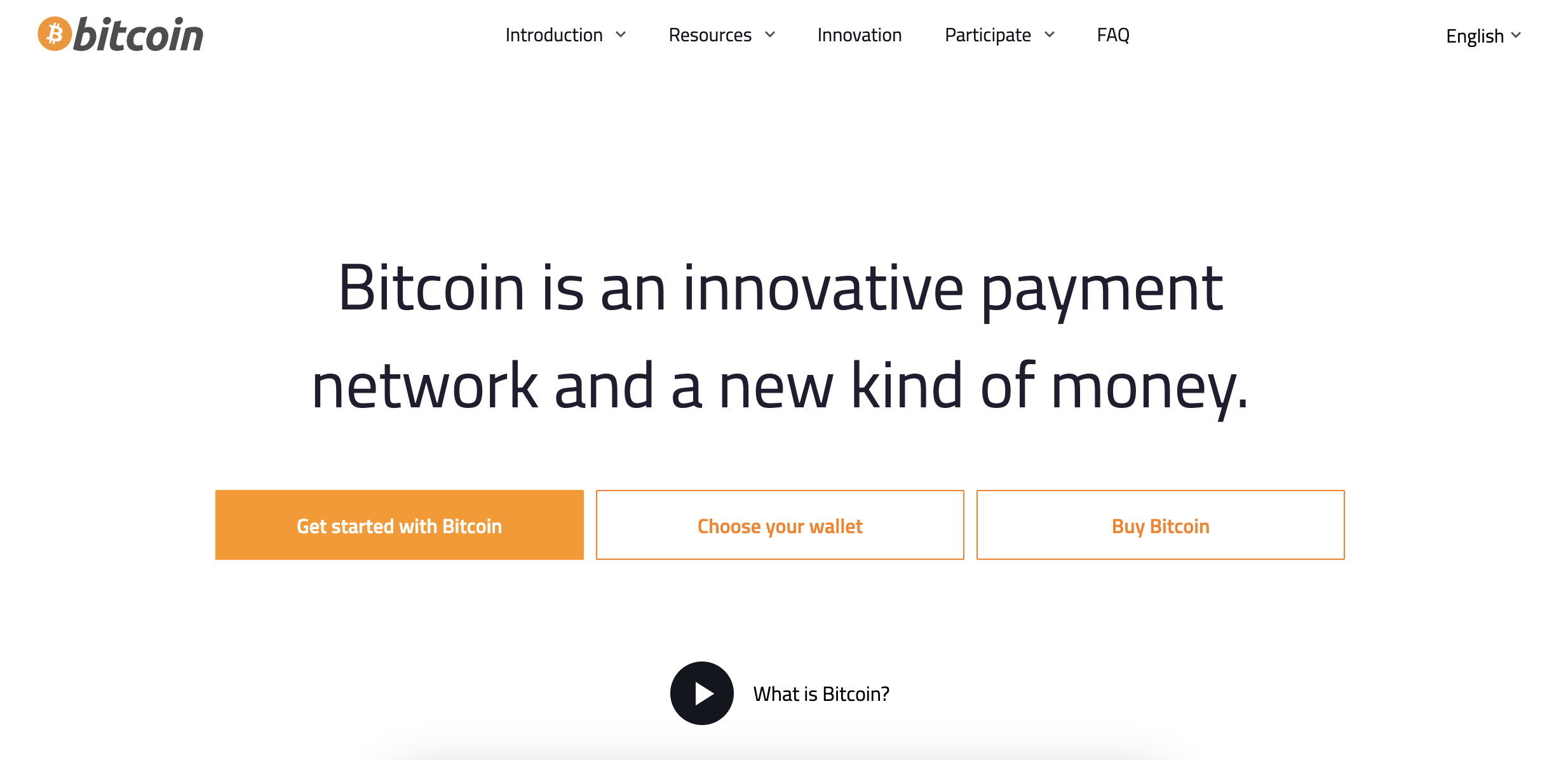
Due to its proof-of-work mechanism, Bitcoin mining is also energy-intensive. This means you’ll need to dedicate vast sums to energy consumption. If you don’t have the financial means, you could try joining a mining pool. This means sharing your resources with other miners.
In turn, this will give you the best chance possible of earning Bitcoin mining rewards. You might also consider a stake-to-mine platform like Bitcoin Minetrix, which we discuss later. Nevertheless, the Bitcoin mining reward is currently at 6.25 BTC. The average block duration is 10 minutes. The Bitcoin mining reward will be reduced to 3.125 BTC in April 2024.
| Cryptocurrency | Mining Framework | Required Device | Average Block Time | Block Reward |
| Bitcoin | Proof-of-Work (SHA-256) | ASICs | 10 minutes | 6.25 BTC |
2. Monero (XMR) – Easiest Crypto to Mine
Consider Monero (XMR) if you’re looking for the easiest crypto to mine. Launched in 2014, Monero is one of the earliest altcoins to enter the market. Its unique selling point is privacy. Unlike Bitcoin, Monero transactions are 100% anonymous. What’s more, the Monero blockchain is trustless, decentralized, and cost-effective.
Monero leverages the proof-of-work consensus mechanism. However, it uses a variation known as RandomX. Put simply, RandomX ensures that everyone has a fair chance of mining. It specifically discourages the use of expensive, energy-intensive ASIC devices.

As a result, Monero can be mined with Central Processing Unit (CPUs). Put otherwise, you can mine Monero without needing to buy any equipment. On the contrary, you can use the CPU stored within your desktop device. A new Monero block is mined every 2 minutes. The mining reward is currently at 0.6 XMR.
| Cryptocurrency | Mining Framework | Required Device | Average Block Time | Block Reward |
| Monero | Proof-of-Work (RandomX) | CPUs | 2 minutes | 0.6 XMR |
3. Dogecoin (DOGE) – Most Profitable Coin to Mine
Some experts claim that Dogecoin (DOGE) is the most profitable crypto to mine. Considered one of the best meme coins to buy, Dogecoin trades 87% below its all-time high price. This means the upside potential could be huge when the next crypto bull market arrives. Should Dogecoin recover to its prior peak, this would amount to gains of over 700%.
So how does Dogecoin mining work? Dogecoin uses a branch of proof-of-work called Scrypt. Not only is Scrypt energy efficient but it’s considerably faster than SHA-256. Dogecoin transactions take just 1 minute to confirm. In contrast, Bitcoin’s SHA-256 structure is 10 times slower.

What’s more, you can even mine Dogecoin with a Graphics Processing Unit (GPU). These are an affordable alternative to ASICs, often costing under $100. The Dogecoin block reward is 10,000 DOGE. Based on current Dogecoin prices, that’s worth over $900.
| Cryptocurrency | Mining Framework | Required Device | Average Block Time | Block Reward |
| Dogecoin | Proof-of-Work (Scrypt) | GPUs | 1 minute | 10,000 DOGE |
4. Bitcoin Gold (BTG) – Best Crypto to Mine with GPU
We found that Bitcoin Gold (BTG) is also the best crypto to mine with a GPU. In fact, Bitcoin Gold was created specifically for this purpose. Launched in 2017, Bitcoin Gold is an offshoot of the original Bitcoin. It created a hard form of Bitcoin’s code but without the original SHA-25 mechanism.
Instead, Bitcoin Gold opted for the Equihash function. In a nutshell, Equihash is ASIC-resistant. This helps Bitcoin Gold achieve its goal of democratizing Bitcoin. As such, anyone can mine Bitcoin Gold with a basic GPU. Moreover, the Equihash mining process is a lot more energy efficient. This means you won’t be hit with huge electricity bills.

Similar to Bitcoin, the Bitcoin Gold block confirmation time is approximately 10 minutes. The block reward is currently at 6.25 BTG. This will be reduced by 50% on the same day as the next Bitcoin halving event. Bitcoin Gold has a market capitalization of nearly $480 million. BTG is up 60% in the prior 12 months.
| Cryptocurrency | Mining Framework | Required Device | Average Block Time | Block Reward |
| Bitcoin Gold | Proof-of-Work (Equihash) | GPUs | 10 minutes | 6.25 BTG |
5. Zcash (ZEC) – Great Option for Privacy-Focused Miners
Zcash (ZEC) is an established cryptocurrency that was launched in 2016. Similar to Monero, it’s considered one of the best altcoins for privacy. It enables users to send and receive funds in complete anonymity. Unlike other blockchains, transactions aren’t tied to a public wallet address.
Although Zcash is loosely based on the original Bitcoin code, it leverages the Equihash consensus mechanism. This makes it a lot easier to mine. The most effective way of mining Zcash is with an ASIC device. This will help you outperform miners with GPU setups. You won’t need an entire farm of ASICs like you do when mining Bitcoin.

This makes Zcash an affordable alternative. Zcash is also the best crypto to mine if you want to retain your privacy. Any mining rewards you earn aren’t associated with your real-world identity. Zcash is currently valued at over $475 million. ZEC is down almost 35% over the past year.
| Cryptocurrency | Mining Framework | Required Device | Average Block Time | Block Reward |
| Zcash | Proof-of-Work (Equihash) | GPUs or ASICs | 75 seconds | 3.125 ZEC |
6. Litecoin (LTC) – Established PoW Coin With Plenty of Liquidity
Litecoin (LTC) is one of the best cryptocurrencies to mine for stability. Created in 2011, Litecoin was originally referred to as the silver to Bitcoin’s gold. While Litecoin isn’t as valuable as it once was, it’s still a respected crypto project, and a lot of people buy Litecoin as an investment. After all, it commands a market capitalization of $5.5 billion.
In addition, Litecoin attracts solid liquidity levels. This makes Litecoin ideal for miners who want to cash their rewards out immediately. In terms of specifics, Litecoin uses the Scrypt consensus mechanism.

This sits within the proof-of-work framework. The average block confirmation time is 2.5 minutes, making Litecoin four times faster than Bitcoin. The block mining reward is currently 6.25 LTC. This is halved every four years but on a different schedule than Bitcoin. Although GPU mining is possible, Litecoin is best mined with ASICs.
| Cryptocurrency | Mining Framework | Required Device | Average Block Time | Block Reward |
| Litecoin | Proof-of-Work (Scrypt) | GPUs or ASICs | 2.5 minutes | 6.25 LTC |
7. Ravencoin (RVN) – KawPow Mining Coin With ASIC-Resistance
Launched in 2018, Ravencoin (RVN) is an established blockchain network network. It was created as a fork from the original Bitcoin network but with some clear improvements. For instance, it leverages a proof-of-work mechanism called KawPow. Not only is KawPow more efficient than SHA-256 but it’s resistant to ASICs.
This means Ravencoin mining can’t be dominated by centralized mining pools. Instead, anyone can use a GPU mining rig, which is simple and affordable to set up. Ravencoin has a fast block confirmation time of just 1 minute. What’s more, the block mining reward is 5,000 RVN.
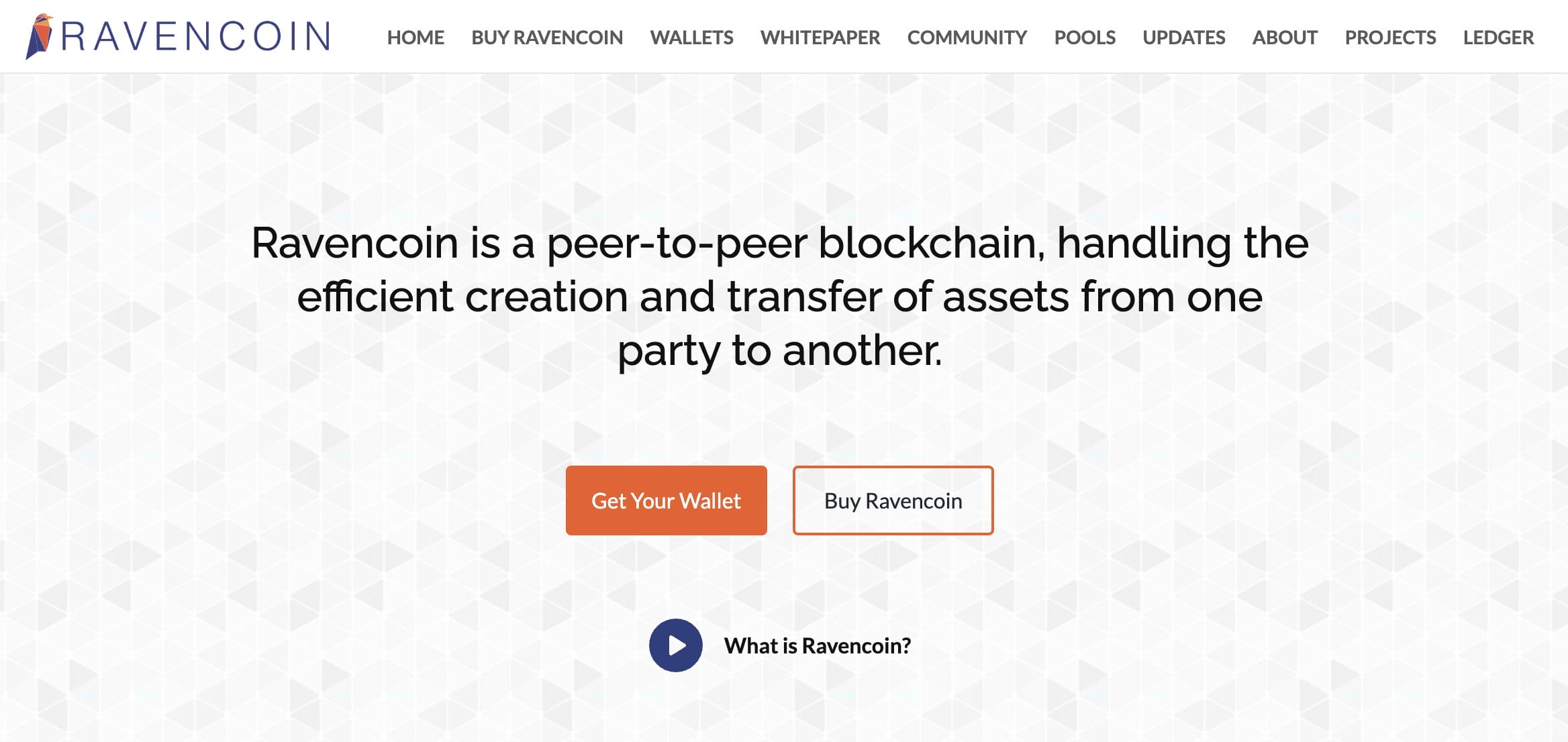
Based on current Ravencoin prices, that’s about $130. This translates to over $7,800 per hour. Or more than $187,000 per day. In terms of performance, Ravencoin is up 40% in the prior month. This converts to a market capitalization of almost $350 million. That said, Ravencoin trades 90% below its all-time high.
| Cryptocurrency | Mining Framework | Required Device | Average Block Time | Block Reward |
| Ravencoin | Proof-of-Work (KawPow) | GPUs | 1 minute | 5,000 RVN |
8. Vertcoin (VTC) – One-Click Mining Software for Beginners
Vertcoin (VTC) is the best crypto to mine for beginners. This crypto project was launched in early 2014. Like many new projects during this period, Vertcoin was created to improve Bitcoin’s deficiencies. More specifically, Vertcoin ensures that anyone can mine VTC coins from the comforts of home.
All you need is a basic desktop device. Both CPUs and GPUs are compatible. Best of all, Vertcoin offers one of the easiest set-up processes. First, download the native Vertcoin mining software for your operating system. Then, simply click the ‘Start Mining’ button. And that’s it, your desktop device will begin mining VTC around the clock.
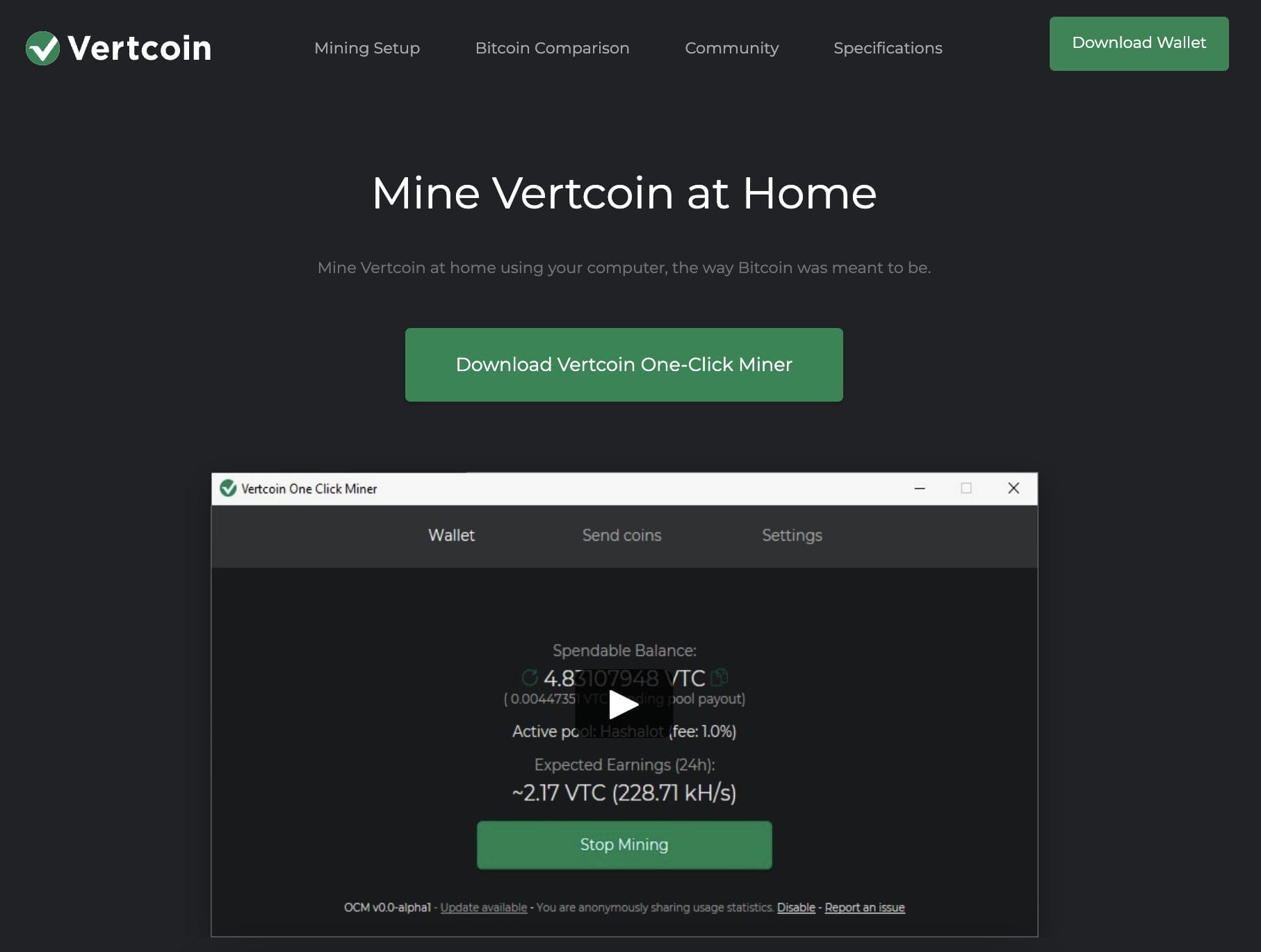
Crucially, Vertcoin is ASIC-resistant. This ensures that everyone has a fair chance of mining a block, rather than those with the greatest resources. Vertcoin offers a block reward of 12.5 VTC. A new block is mined every 2.5 minutes. Vetcoin uses the Lyra2REv3 mining mechanism, which is an offshoot of proof-of-work.
| Cryptocurrency | Mining Framework | Required Device | Average Block Time | Block Reward |
| Vertcoin | Proof-of-Work (Lyra2REv3) | CPUs and GPUs | 2.5 minutes | 12.5 VTC |
9. Electroneum (ETN) – Mine ETN Coins on a Smartphone Device
If you’re looking to mine on a smartphone device, Electroneum (ETN) could be the best crypto to mine. This crypto project was launched in 2017 after raising $40 million in ICO funding. At the time, this made Electroneum one of the best crypto ICOs to invest in. Electroneum aims to help the unbanked with fast and cheap global transactions.
It also revolutionized the crypto mining space; Electroneum enables users to mine ETN coins on a smartphone device. It has developed a proprietary app for this purpose. The Electroneum app can be downloaded for free from Google Play and the App Store. Simply activate the app to begin mining.

A new Electroneum block is mined approximately every 2 minutes. However, this can vary depending on how busy the network is. In addition, Electroneum mining rewards are not fixed like other blockchain standards. The specific reward depends on how much input each miner contributes. This is due to the proof-of-responsibility mining model.
| Cryptocurrency | Mining Framework | Required Device | Average Block Time | Block Reward |
| Electroneum | Proof-of-Responsibility | Smartphone | 2 minutes | Variable |
10. Ethereum Classic (ETC) – GPU-Supported Ethash Mining
Ethereum Classic (ETC) is the final option on this list of cryptocurrencies to mine. Ethereum Classic split with the original Ethereum in 2015. Citing ‘Code is Law’, this is because the original Ethereum blockchain reversed a series of transactions. This was linked to a large-scale hack of Ethereum’s decentralized autonomous organization (DAO).
Just like the original Ethereum, Ethereum Classic supports smart contracts and dApps. While Ethereum has since merged to proof-of-stake, Ethereum Classic remains on the Ethash mining mechanism. This is a more efficient and scalable branch than SHA-256. Ethereum Classic is a large-cap crypto, currently valued at over $4 billion.

That said, Ethereum Classic can still be mined with GPUs. This is because the Ethash function is ASIC-resistant. Ethereum Classic has an average block confirmation time of 13-14 seconds. Each mined block pays 2.56 ETC. The mining reward is reduced by 20% every 5 million blocks.
| Cryptocurrency | Mining Framework | Required Device | Average Block Time | Block Reward |
| Ethereum Classic | Proof-of-Work (Ethash) | GPUs | 13-14 seconds | 2.56 ETC |
Best Mining Coins Compared
Now let’s compare the 10 best mining coins for 2024:
| Cryptocurrency | Mining Framework | Required Device | Average Block Time | Block Reward |
| Bitcoin | Proof-of-Work (SHA-256) | ASICs | 10 minutes | 6.25 BTC |
| Monero | Proof-of-Work (RandomX) | CPUs | 2 minutes | 0.6 XMR |
| Dogecoin | Proof-of-Work (Scrypt) | GPUs | 1 minute | 10,000 DOGE |
| Bitcoin Gold | Proof-of-Work (Equihash) | GPUs | 10 minutes | 6.25 BTG |
| Zcash | Proof-of-Work (Equihash) | GPUs or ASICs | 75 seconds | 3.125 ZEC |
| Litecoin | Proof-of-Work (Scrypt) | GPUs or ASICs | 2.5 minutes | 6.25 LTC |
| Ravencoin | Proof-of-Work (KawPow) | GPUs | 1 minute | 5,000 RVN |
| Vertcoin | Proof-of-Work (Lyra2REv3) | CPUs and GPUs | 2.5 minutes | 12.5 VTC |
| Electroneum | Proof-of-Responsibility | Smartphone | 2 minutes | Variable |
| Ethereum Classic | Proof-of-Work (Ethash) | GPUs | 13-14 seconds | 2.56 ETC |
Methodology: How We Picked The Best Coins to Mine
Still asking the question – What is the best crypto to mine? We’ll now explain our methodology when ranking the best mining coins for this guide.
Low Mining Difficulty and High Rewards
When searching for the best coin to mine, we initially focused on the perfect balance between mining difficulty and high rewards. Put otherwise, how easy or difficult is it to successfully mine a block? And what is the correlation between mining value and output?
Ideally, you’ll want to mine crypto coins with a low difficulty ratio. This means you’ve got the best chance possible of earning rewards. However, the rewards mined should reflect the inputted effort. Otherwise, you could be losing money.
For instance, Bitcoin offers the highest mining rewards. Each 10-minute block yields 6.25 BTC. That’s currently worth over $350,000. Conversely, Bitcoin is also the most difficult coin to mine, considering how much competition there is.
Coin Credibility and Development
When choosing what to mine, we also prioritized mining coins with a solid reputation for credibility and development. This way, you can accumulate coins over time, allowing them to appreciate in value.
- For example, those mining Dogecoin between 2013 and 2020 would have had little competition.
- After all, Dogecoin was a worthless meme coin, so the mining difficulty was minute.
- Fast forward to late 2020 and Dogecoin became mainstream.
- By May 2023, Dogecoin had surpassed a market capitalization of $80 billion.
- This means early miners could have cashed out their rewards for significant amounts.
Other credible mining coins with an established track record include Monero, Zcash, Litecoin, and Ethereum Classic. These mining ecosystems have gone through many bear markets. But are still here today with loyal communities.
Network Hash Rate and Competition
The network hash rate determines how much computational power is being supplied to a blockchain. When there’s more competition in the market, the hash rate increases. This makes it more difficult to mine, as you’re competing against a larger number of miners.
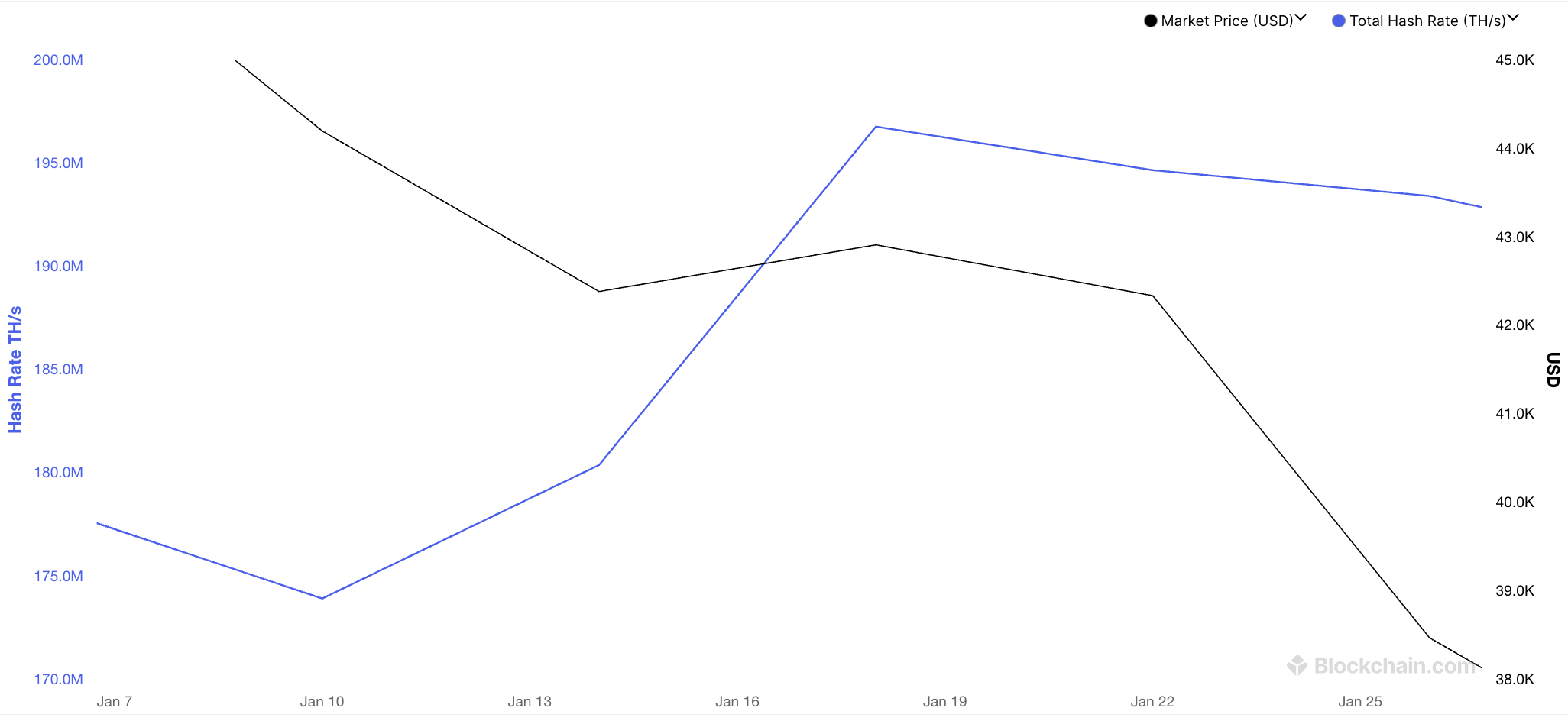
And conversely, lower hash rates mean less competition. This means you’ve got a greater chance of success, as the network difficulty will decline accordingly. The key issue is that the price of a cryptocurrency can influence the hash rate. When prices are high, more miners are motivated to mine.
Cost of Required Hardware and Operation
The cost to mine crypto will vary widely depending on the network and mining algorithm. Our methodology covered all budgets, ensuring that everyone has a fair chance of mining.
For example, Bitcoin is the best crypto to mine if you have the financial means. You’ll need to invest substantial amounts into ASICs, cooling devices, and electricity consumption.
Not everyone can afford to mine Bitcoin. That’s why we also include mining coins that support CPUs and GPUs. We also included Electroneum, which enables you to mine on a smartphone device.
Staking and Passive Income
Some cryptocurrencies, such as Qtum and Decred, use a hybrid mining mechanism. This combines segments of the proof-of-work and proof-of-stake systems. This means mining coins can be staked for passive rewards.
However, we found that the correlation between effort and rewards was on the low side, which is why these projects didn’t make our list. What’s more, the best crypto staking platforms allow you to stake proof-of-work coins effortlessly.
What is the Best Way to Mine Crypto?
There are several different ways to mine crypto. The best option will depend on your available resources.
Let’s take a closer look at the best ways to mine in 2024.
Pool Mining – Easiest Way to Mine Crypto
The easiest way to mine crypto is via a ‘mining pool’ – especially if you’re a beginner. Put simply, you’ll be combining your resources with other miners. Collectively, this gives you a better chance of winning mining rewards. This is because you’re pooling your computational power – so you’ve got strength in numbers.
Any mining rewards you earn will be split proportionately. The main drawback is that mining pools are often centralized. This means you need to trust that the mining pool is credible.
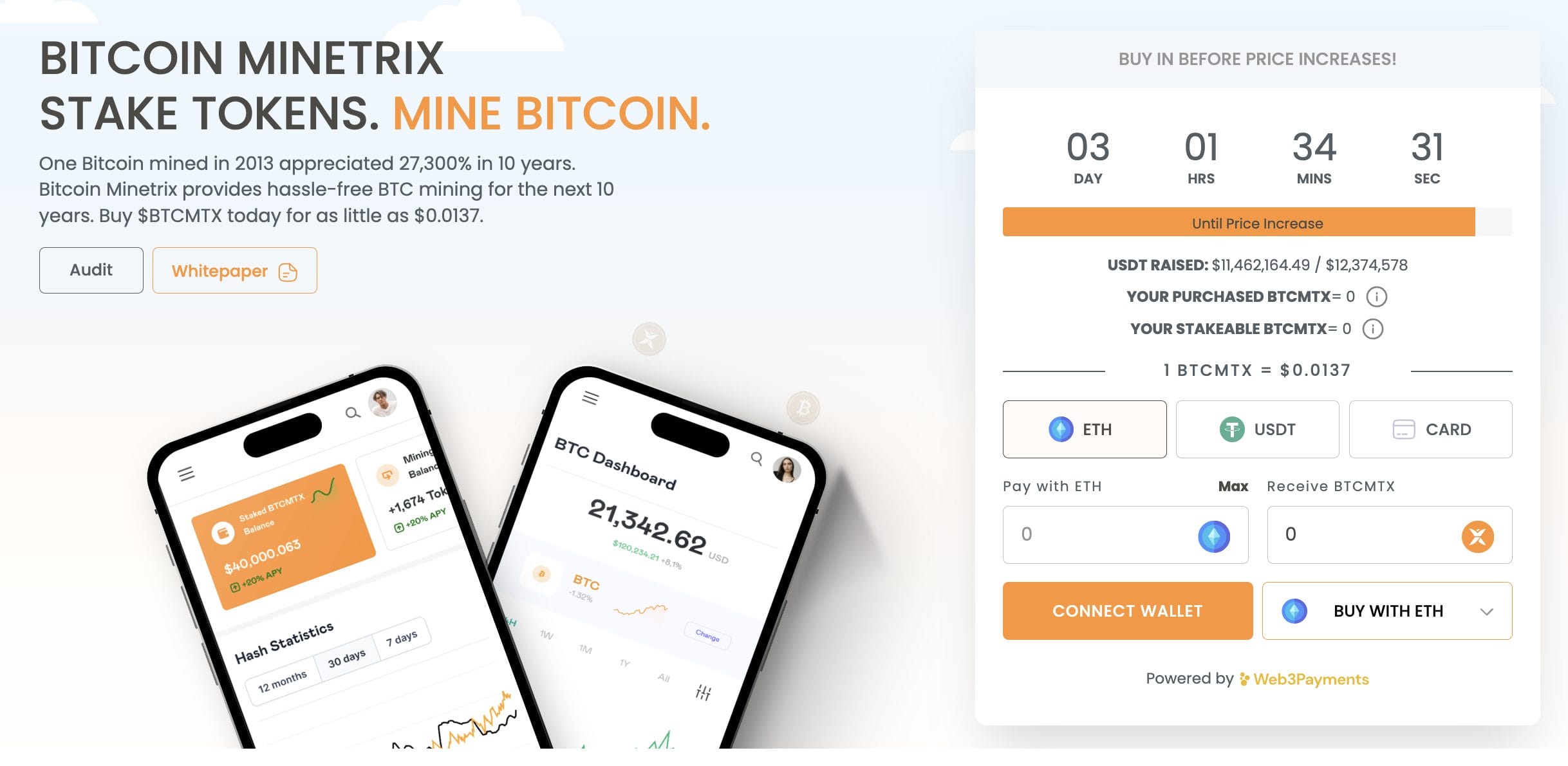
A more appealing option could be Bitcoin Minetrix, which has developed a stake-to-mine concept. Similar to pool mining, you can mine Bitcoin without needing vast resources. However, Bitcoin Minetrix takes things to the next level, as you won’t need to own any mining hardware.
Instead, you simply need to stake BTCMTX tokens. BTCMTX is native to Bitcoin Minetrix’s ecosystem. Once staked, BTCMTX tokens earn credits, which can be swapped for Bitcoin mining power. The stake-to-mine concept is proving popular – Bitcoin Minetrix has raised more than $11.4 million in presale funding.
ASICs – Best Way to Mine Crypto
ASICs (Application-Specific Integrated Circuits) are the most powerful devices to use when mining crypto. They generate significantly more hashing power than GPUs and CPUs. This is why ASICs are a minimum requirement when mining Bitcoin. Unfortunately, the best ASICs are costly. You should expect to pay thousands of dollars per device.
And even then, there’s no guarantee you’ll successfully mine a Bitcoin block. With this in mind, ASICs are better used on other mining coins. For example, ASICs are ideal for mining Litecoin. While the competition is significantly weaker than Bitcoin, Litecoin is still a large-cap crypto. This means your LTC mining rewards can be cashed out with ease.
What is the Most Powerful ASIC?
- According to CoinCodex, the most powerful ASIC is the Bitmain Antminer S19 XP Hyd.
- It can generate a hash rate of 255 TH/s.
- This ASIC device will set you back nearly $6,000.
CPUs and GPUs – Convenient But Limited
When Bitcoin was first launched in 2009, it was possible to mine with CPUs. These are the small processing units found within laptops and basic personal computers. As competition increased, miners had to upgrade to GPUs. This is because GPUs generate a lot more power than CPUs.
Today, neither CPUs nor GPUs can be used to mine Bitcoin. They simply don’t generate enough hashing power. They can, however, be used on less popular mining coins. For example, Bitcoin Gold, Ravencoin, and Vertcoin all support GPU mining. These mining networks are specifically resistant to ASICs, making them more inclusive.
What is The Easiest Crypto to Mine?
If you’re searching for the ‘easiest’ crypto to mine, you’ll need to consider the following:
- Hardware: Forget ASIC devices, these are expensive to buy, operate, and maintain. Instead, the easiest coins to mine are compatible with CPUs, GPUs, and even smartphones.
- Mining Algorithm: The mining algorithm will also play a role. Bitcoin’s SHA-256 model is considered the most difficult. This is why it requires an entire farm of ASICs just to solve the mining equation. Scrypt, Equihash, and Ethash are considered a lot easier.
- Network Difficulty: The network difficulty will rise and fall constantly. This helps networks retain their desired block confirmation time. Mining coins with a lower difficulty are easier to mine.
- Efficiency: Some mining mechanisms are more efficient than others. Bitcoin is the least efficient, due to the required computational power for each mined block.
- Liquidity: If you’re mining crypto to make money, ensure the coin has sufficient liquidity. If not, you might struggle to sell your mining coins on public exchanges.
Taking the above factors into account, we found that Monero is the easiest coin to mine. While Monero uses proof-of-stake, it leverages the RandomX variant. This discourages ASIC devices, meaning that CPUs can still be used.
Moreover, new blocks are created every 2 minutes, so there are plenty of opportunities to succeed. In addition, Monero was launched in 2014 and has a market capitalization of over $2.5 million – so there are no concerns with liquidity.
That being said, we’d also have to include Bitcoin Minetrix when talking about easy coins to mine. As mentioned, Bitcoin Minetrix has created a stake-to-mine mechanism. So, you can mine Bitcoin remotely without owning any hardware. All you need is some BTCMTX tokens, which can be staked and converted to Bitcoin mining power.
Conclusion
In summary, while Bitcoin remains the best crypto to mine, the process now requires vast resources. Not only ASIC devices but also computational power and energy consumption. Fortunately, there is an alternative to consider.
Bitcoin Minetrix allows users to stake its native token, BTCMTX. This earns credits, which can be redeemed for Bitcoin mining power. This means you can mine Bitcoin remotely without needing ASIC devices.
Best Coin to Mine FAQs
What is the most profitable crypto to mine?
We found that Dogecoin is one of the most profitable crypto to mine. Its Scrypt mechanism means that even GPUs can mine DOGE.
What is the simplest crypto to mine?
Vertcoin is one of the simplest cryptos to mine. Simply download the Vertcoin mining software to your desktop device and click the ‘Start Mining’ button.
Is crypto mining legal?
Crypto mining is legal in most countries. This doesn’t include China, which banned crypto mining in 2021. Crypto mining is also banned in the state of New York.
What is the best crypto mining site?
Bitcoin Minetrix is a great option if you want to mine Bitcoin remotely. After you buy BTCMTX tokens, you’ll then stake them, and convert the accumulated credits to Bitcoin mining power.
What coin can I mine for free?
You can mine Electroneum for free on a smartphone device. Download the Electroneum app for iOS/Android and start mining.
What coin is still worth mining?
Some of the best coins worth mining in 2024 include Monero, Dogecoin, Bitcoin Gold, and Zcash.
References
- Bitcoin mines could be used for energy storage (Financial Times)
- Cryptoverse: Bitcoin miners make money ahead of ‘halving’ (Reuters)
- Dogecoin’s $80 billion valuation now makes it bigger than these 10 well-known companies (Business Insider)
- Understanding a revolutionary and flawed grand experiment in blockchain: The DAO attack (Journal of Cases on Information Technology)


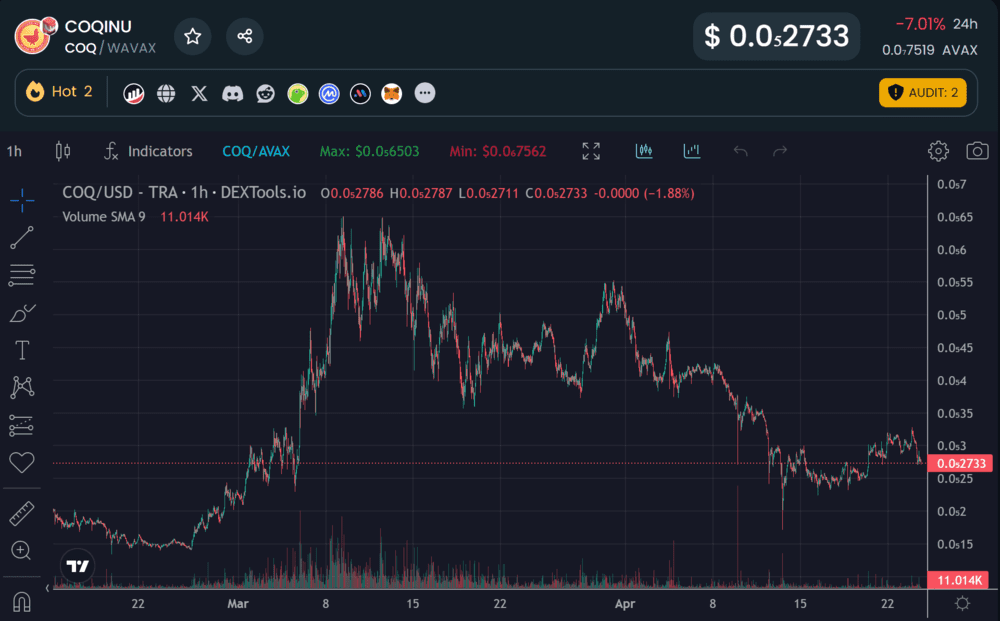
 Michael Graw
Michael Graw 
 Eliman Dambell
Eliman Dambell 

 Eric Huffman
Eric Huffman